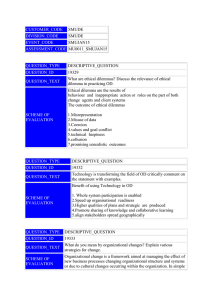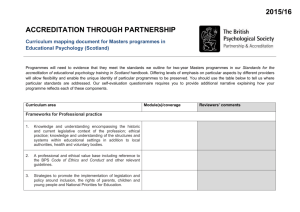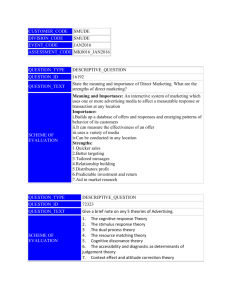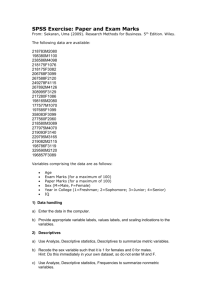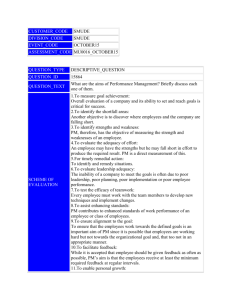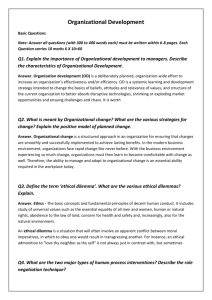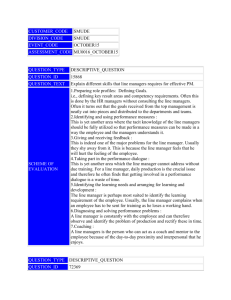CUSTOMER_CODE SMUDE DIVISION_CODE SMUDE
advertisement
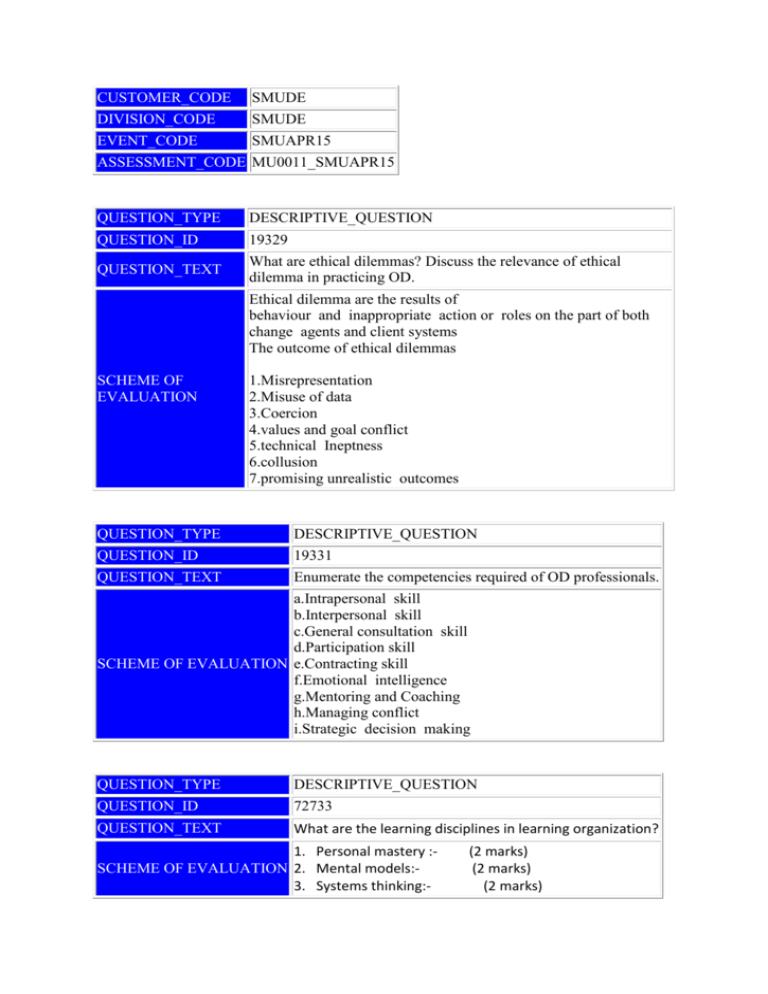
CUSTOMER_CODE SMUDE DIVISION_CODE SMUDE EVENT_CODE SMUAPR15 ASSESSMENT_CODE MU0011_SMUAPR15 QUESTION_TYPE DESCRIPTIVE_QUESTION QUESTION_ID 19329 QUESTION_TEXT What are ethical dilemmas? Discuss the relevance of ethical dilemma in practicing OD. Ethical dilemma are the results of behaviour and inappropriate action or roles on the part of both change agents and client systems The outcome of ethical dilemmas SCHEME OF EVALUATION 1.Misrepresentation 2.Misuse of data 3.Coercion 4.values and goal conflict 5.technical Ineptness 6.collusion 7.promising unrealistic outcomes QUESTION_TYPE DESCRIPTIVE_QUESTION QUESTION_ID 19331 QUESTION_TEXT Enumerate the competencies required of OD professionals. a.Intrapersonal skill b.Interpersonal skill c.General consultation skill d.Participation skill SCHEME OF EVALUATION e.Contracting skill f.Emotional intelligence g.Mentoring and Coaching h.Managing conflict i.Strategic decision making QUESTION_TYPE DESCRIPTIVE_QUESTION QUESTION_ID 72733 QUESTION_TEXT What are the learning disciplines in learning organization? 1. Personal mastery :SCHEME OF EVALUATION 2. Mental models:3. Systems thinking:- (2 marks) (2 marks) (2 marks) 4. Team learning:5. Shared vision:- (2 marks) (2 marks) QUESTION_TYPE DESCRIPTIVE_QUESTION QUESTION_ID 72735 QUESTION_TEXT What do you understand by organizational development and briefly write the features of organizational development SCHEME OF EVALUATION In its widest sense, OD is a planned approach to improve employee and organisational effectiveness. This can be achieved by conscious interventions in those processes and structures that have an immediate bearing on the human aspects of the organisation. OD is the act, process, or result of furthering, advancing or promoting the growth of an organisation. OD is anything done to ‘better’ an organisation. But this definition is too broad and all-inclusive. Features: 1. OD is a planned strategy to bring about organisational change 2. OD always involves a collaborative approach to change 3. OD programs include an emphasis on ways to improve and enhance performance 4. OD relies on a set of humanistic values about people and organisations 5. OD represents a Systems Approach 6. OD is based upon scientific approaches to increase organisational effectiveness QUESTION_TYPE DESCRIPTIVE_QUESTION QUESTION_ID 72736 QUESTION_TEXT What is Team development Intervention? And explain interpersonal development interventions. SCHEME OF EVALUATION You can define team development interventions as the interventions aimed at improving group performance, interpersonal relationship among team members, clarification of roles and responsibilities of team members, decision making process in teams and problem solving abilities, etc. The most significant goal of team building intervention is to improve the interdependence of team members. Interpersonal Development Interventions: Intergroup interpersonal OD interventions attempt to bring to the surface underlying problems to use joint problem solving, to correct misperceptions between groups, and to reopen channels of communications. OD intergroup techniques seek to identify areas of commonality and meta-goals – the superordinate organisation goal. They attempt to apply strategies that encourage interaction and negotiation and to increase frequency of communication. These techniques are aimed at avoiding the “win-lose” situations while emphasising the “win-win” aspects of the situations. QUESTION_TYPE DESCRIPTIVE_QUESTION QUESTION_ID 169095 QUESTION_TEXT Explain in detail why organizations resist change and the measures to overcoming resistance to change? SCHEME OF EVALUATION (Explanation of each point in detail) Ans. The reasons of resistance to change by organizations: i. Power maintenance ii. Structural stability iii. Organisational culture iv. Group Norms The measures for ovecoming resistance to change by organizations: i. Education and Communication ii. Participation and Involvement iii. Facilitation and Support iv. Negotiation and Agreement v. Manipulation and Co–optation vi. Explicit and Implicit coercion
